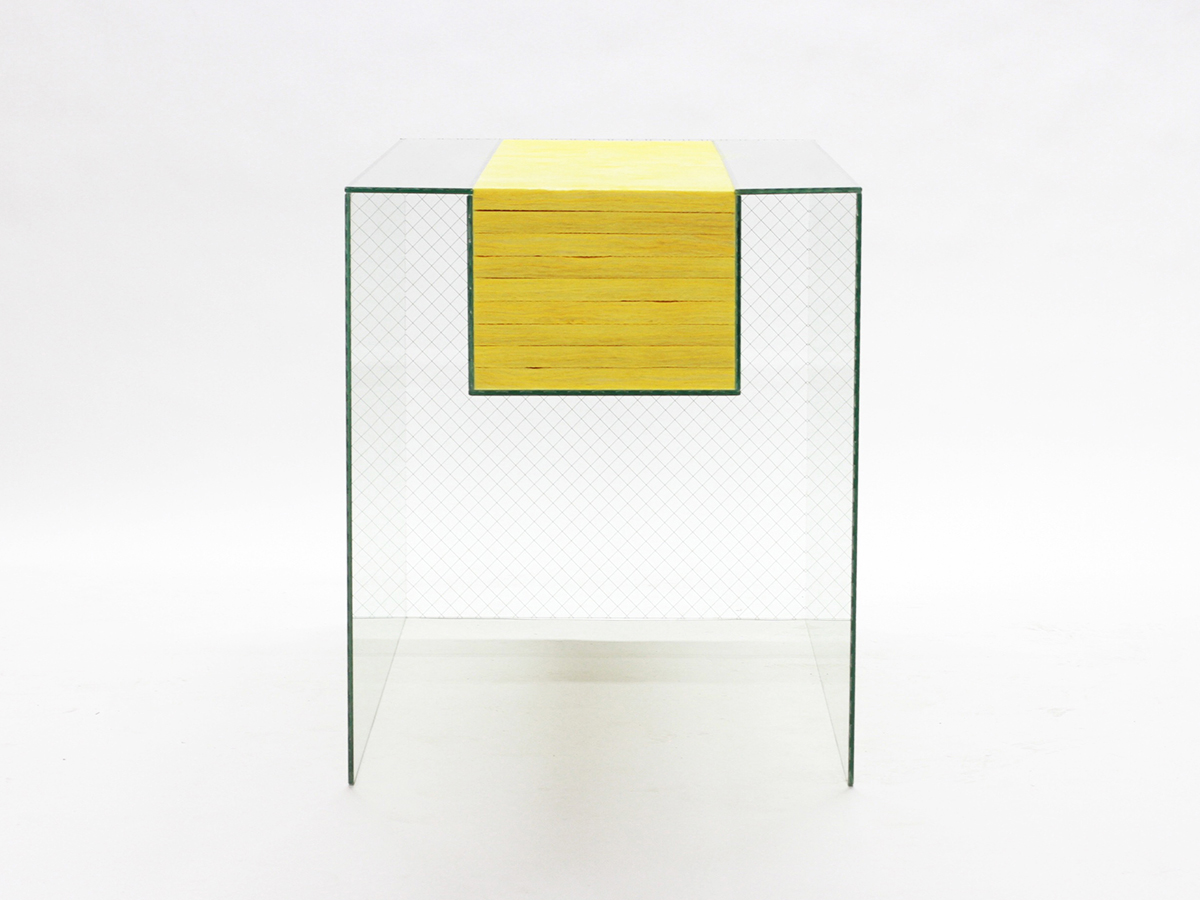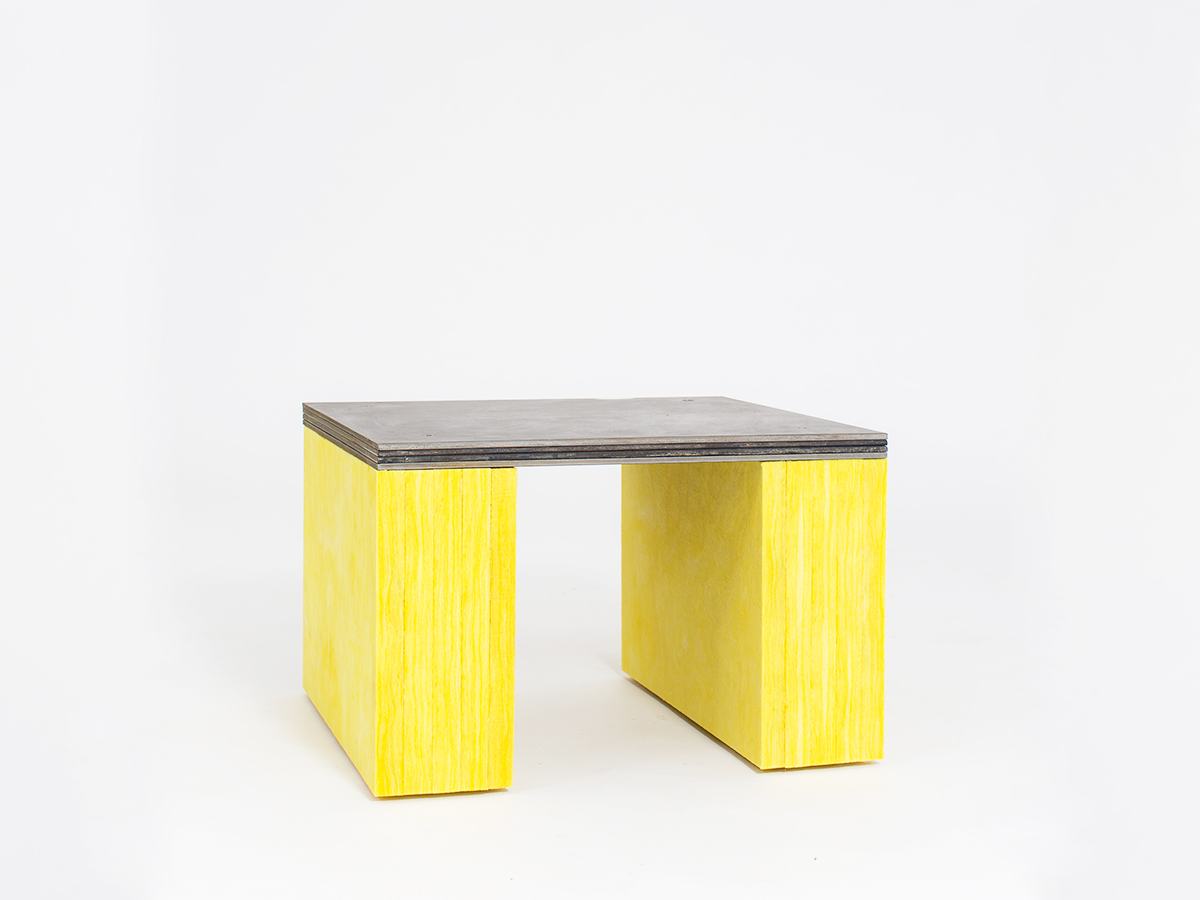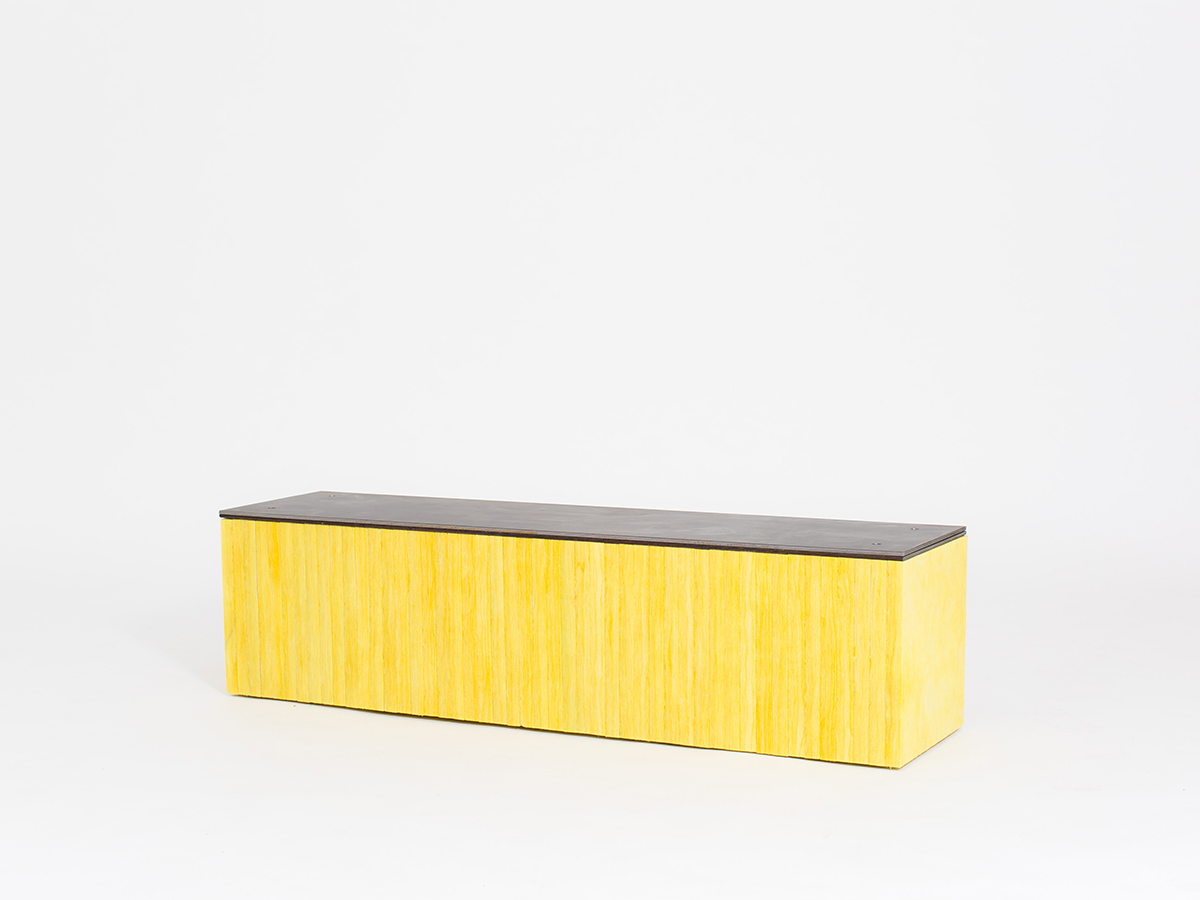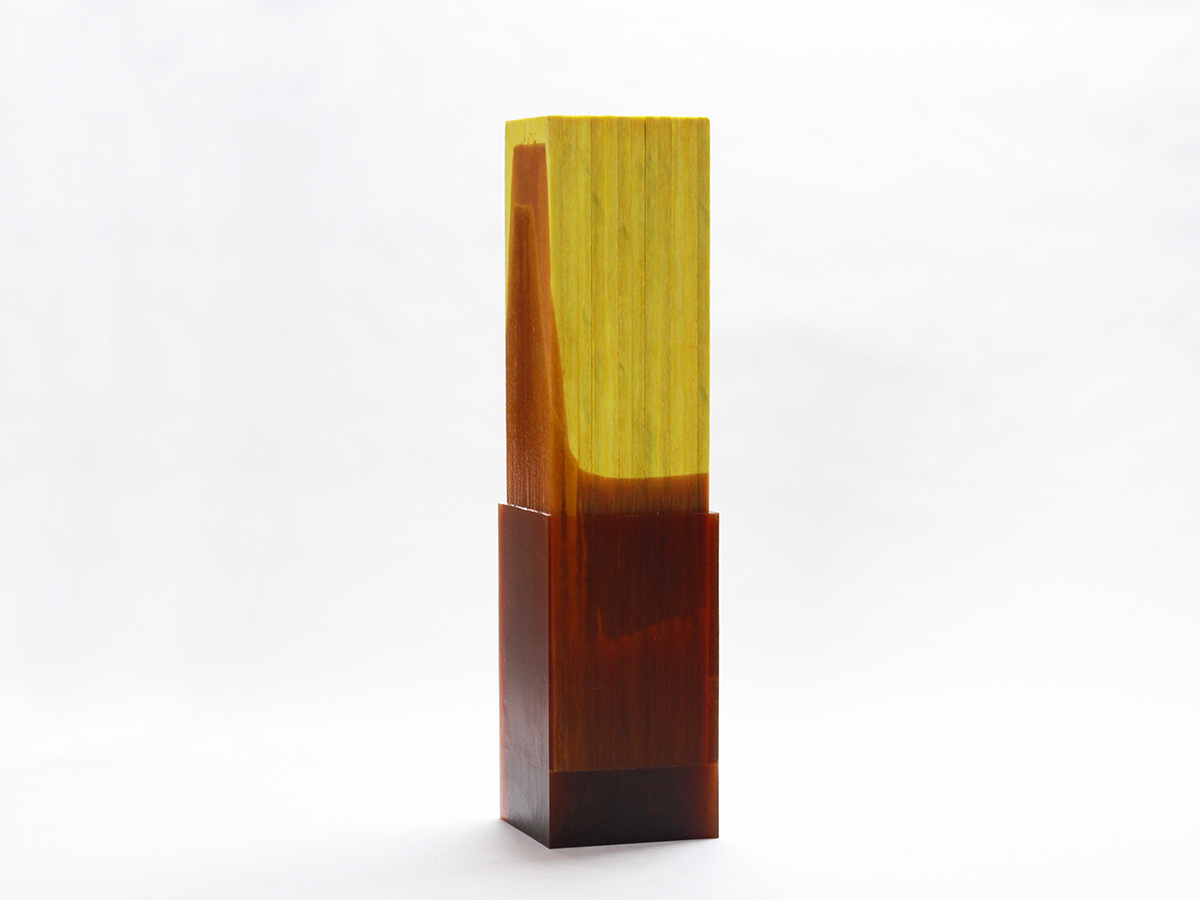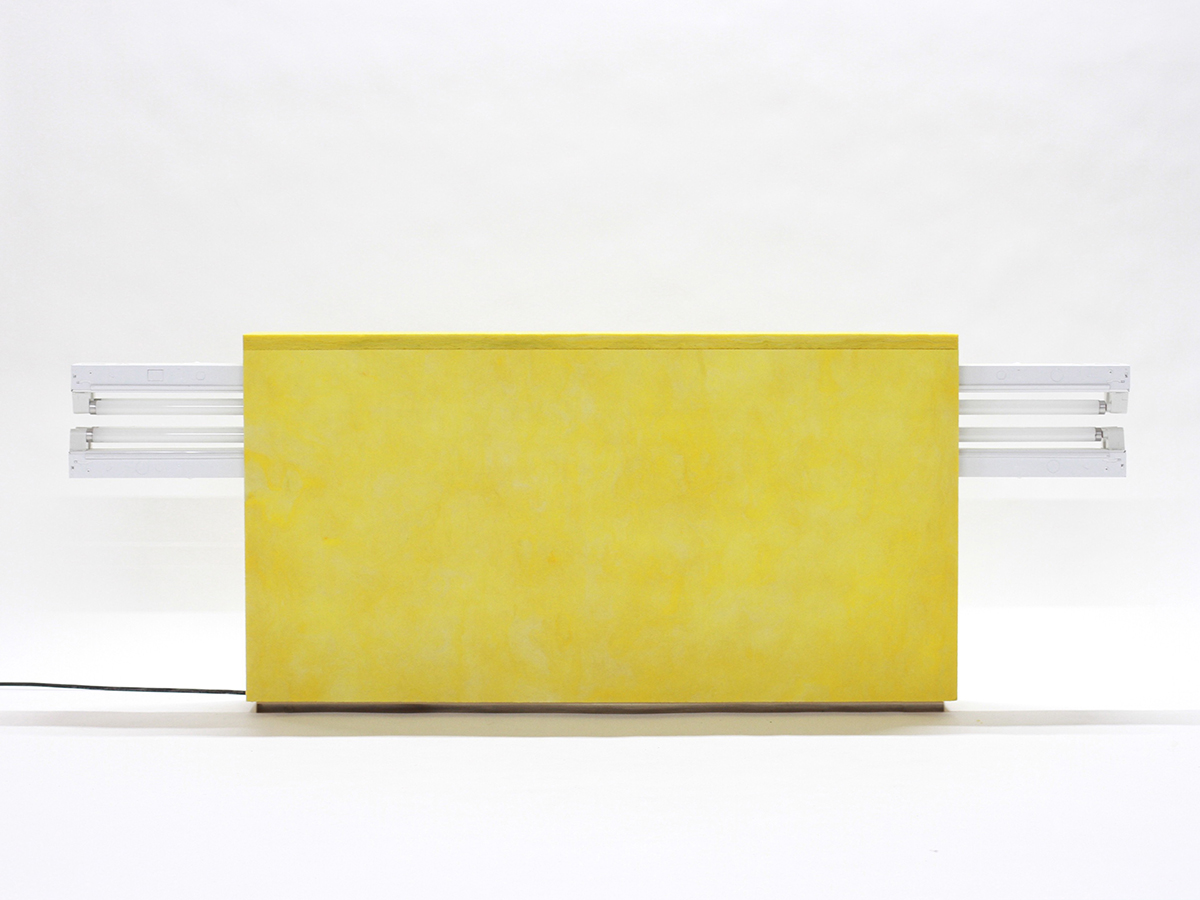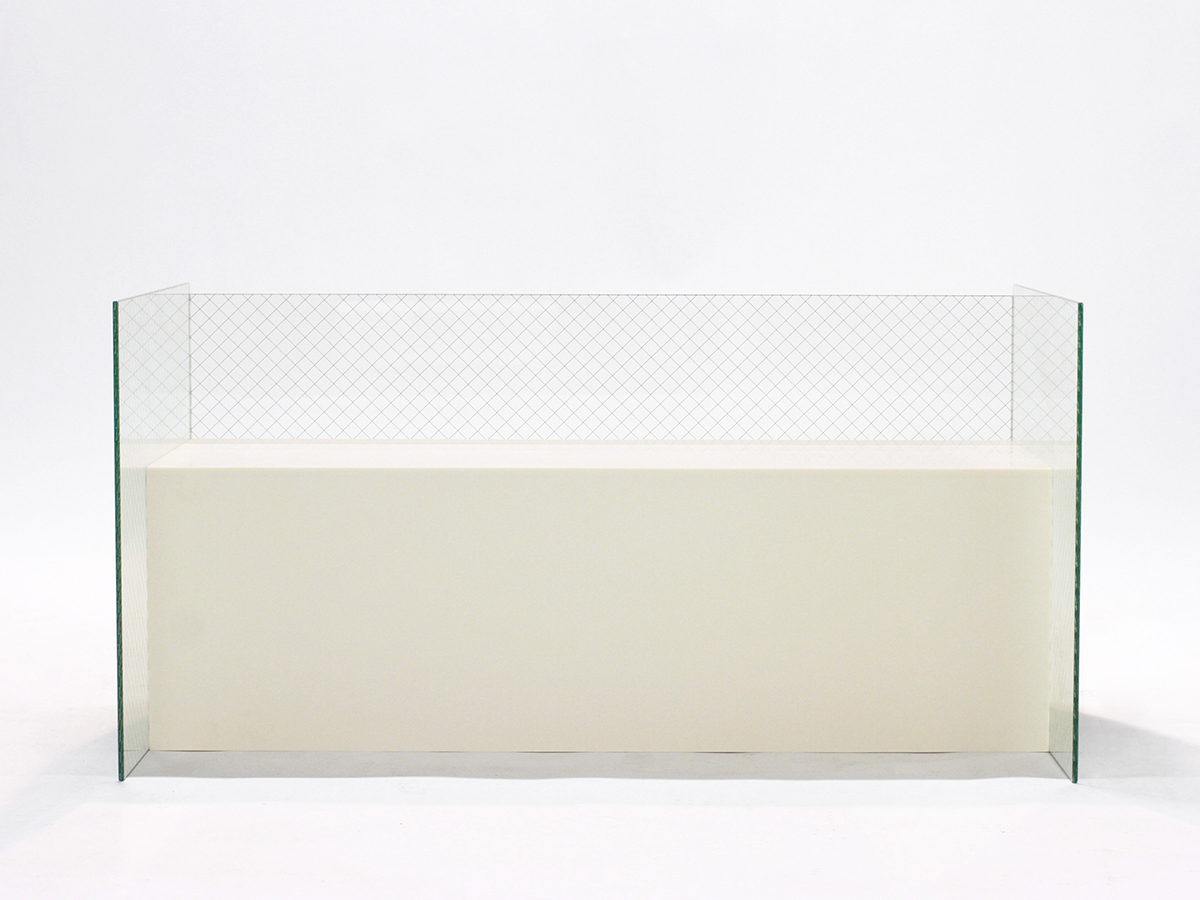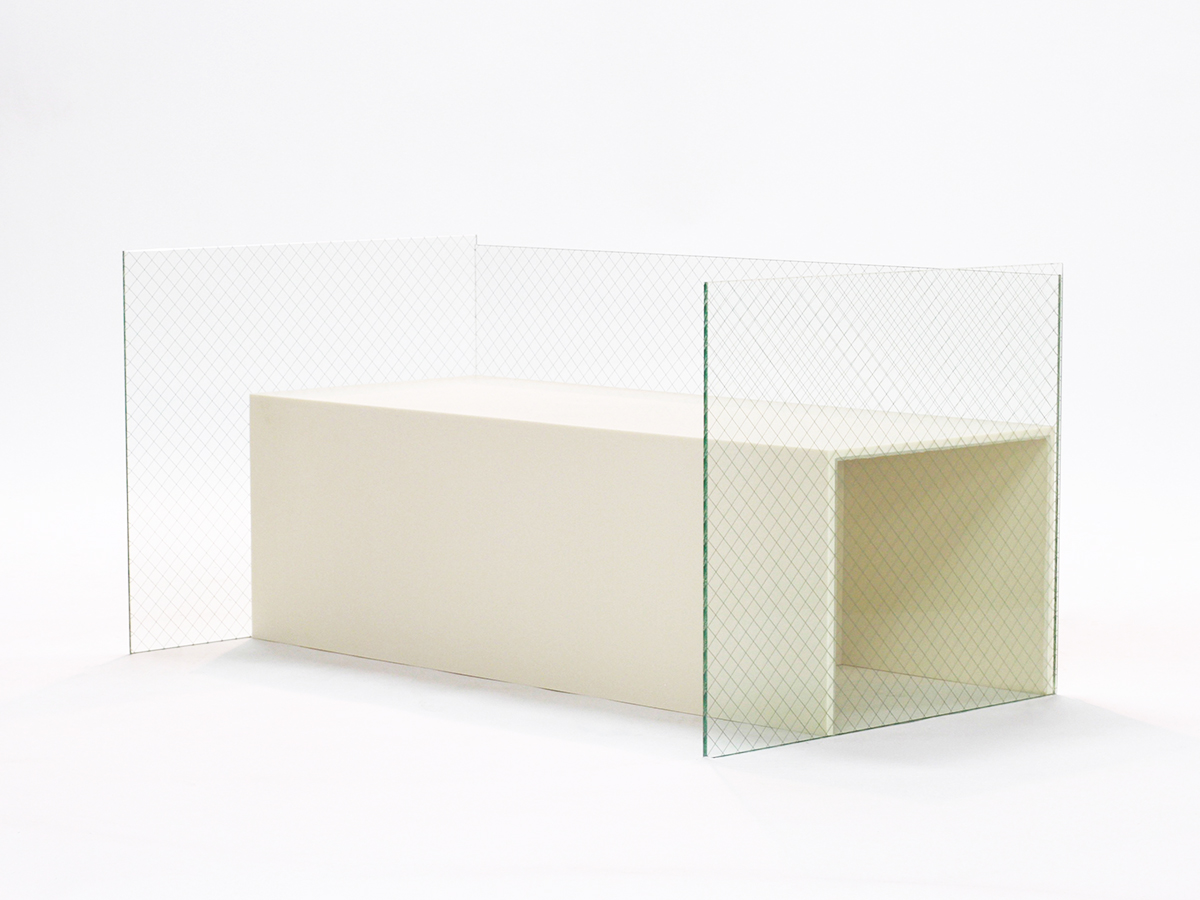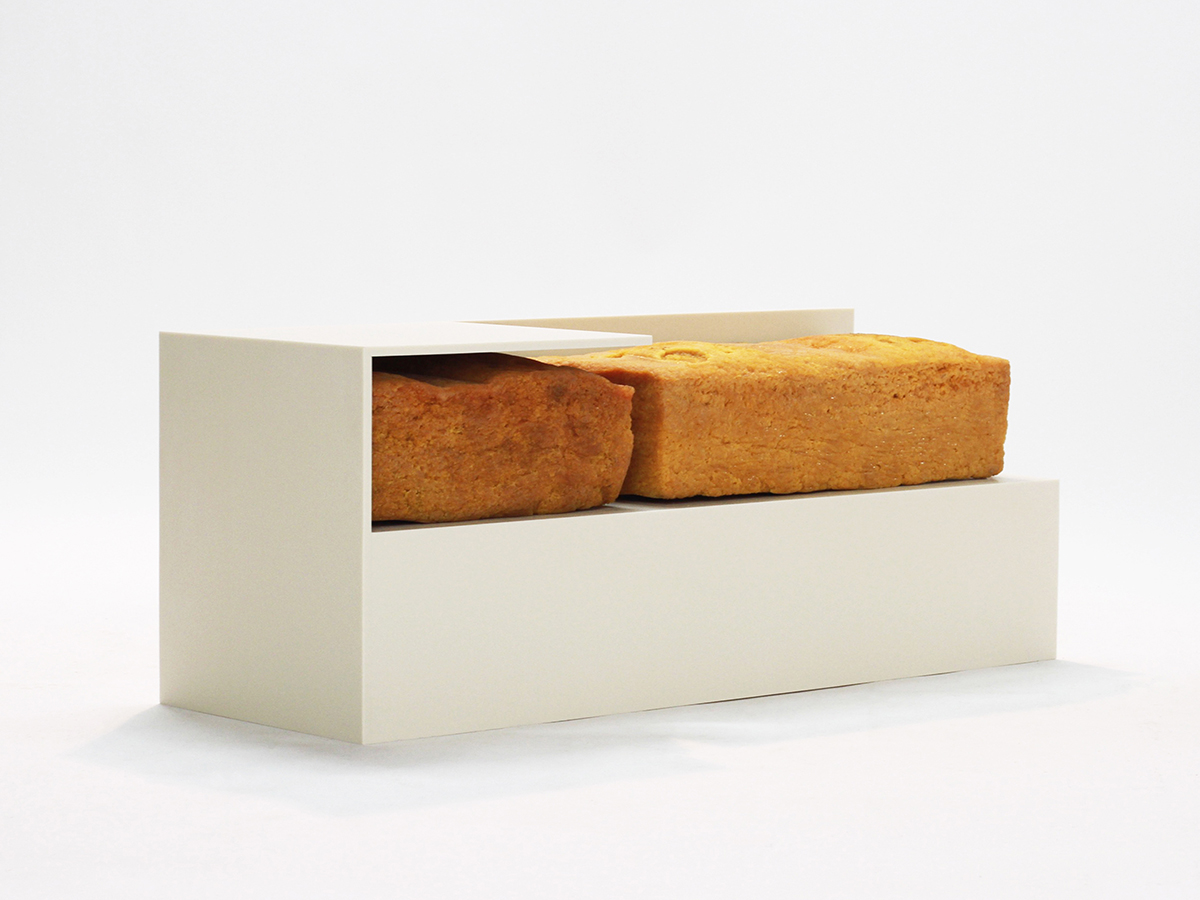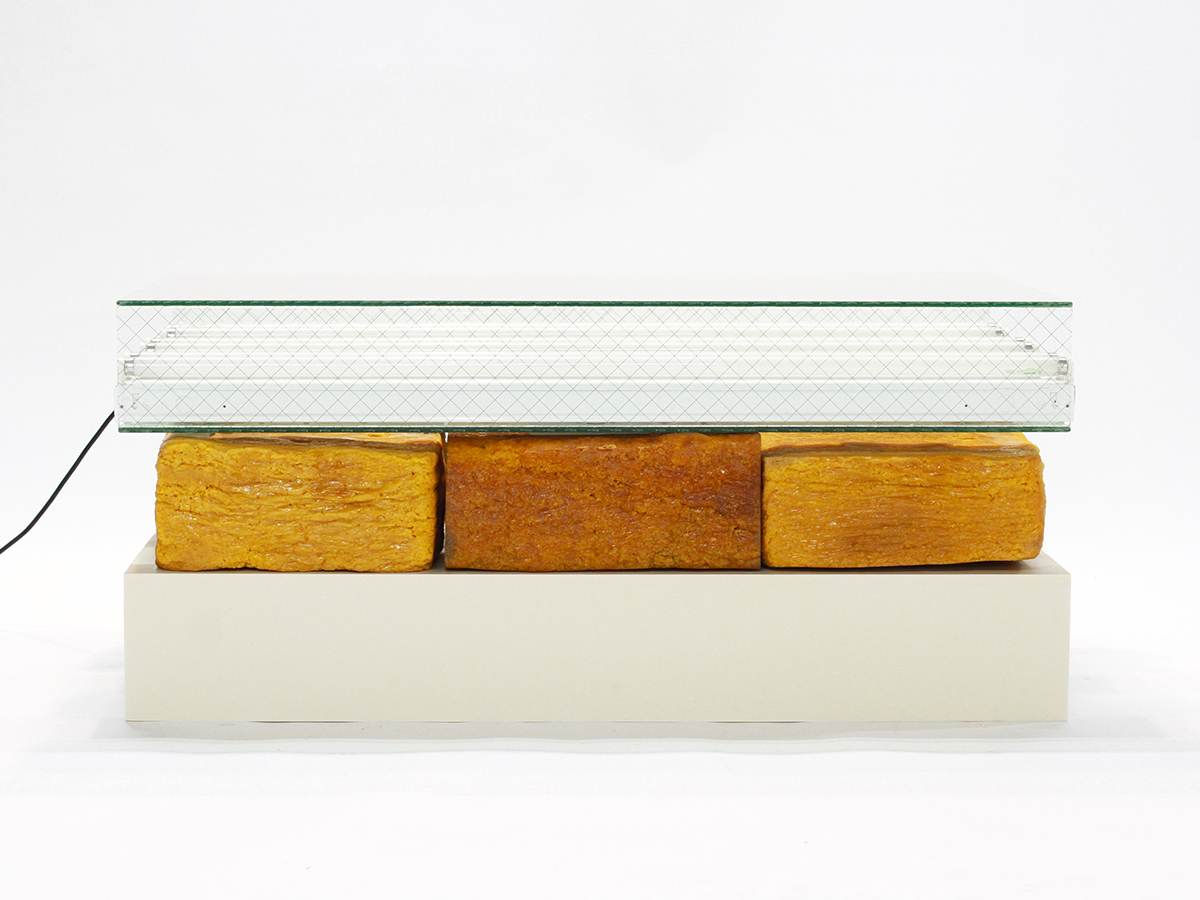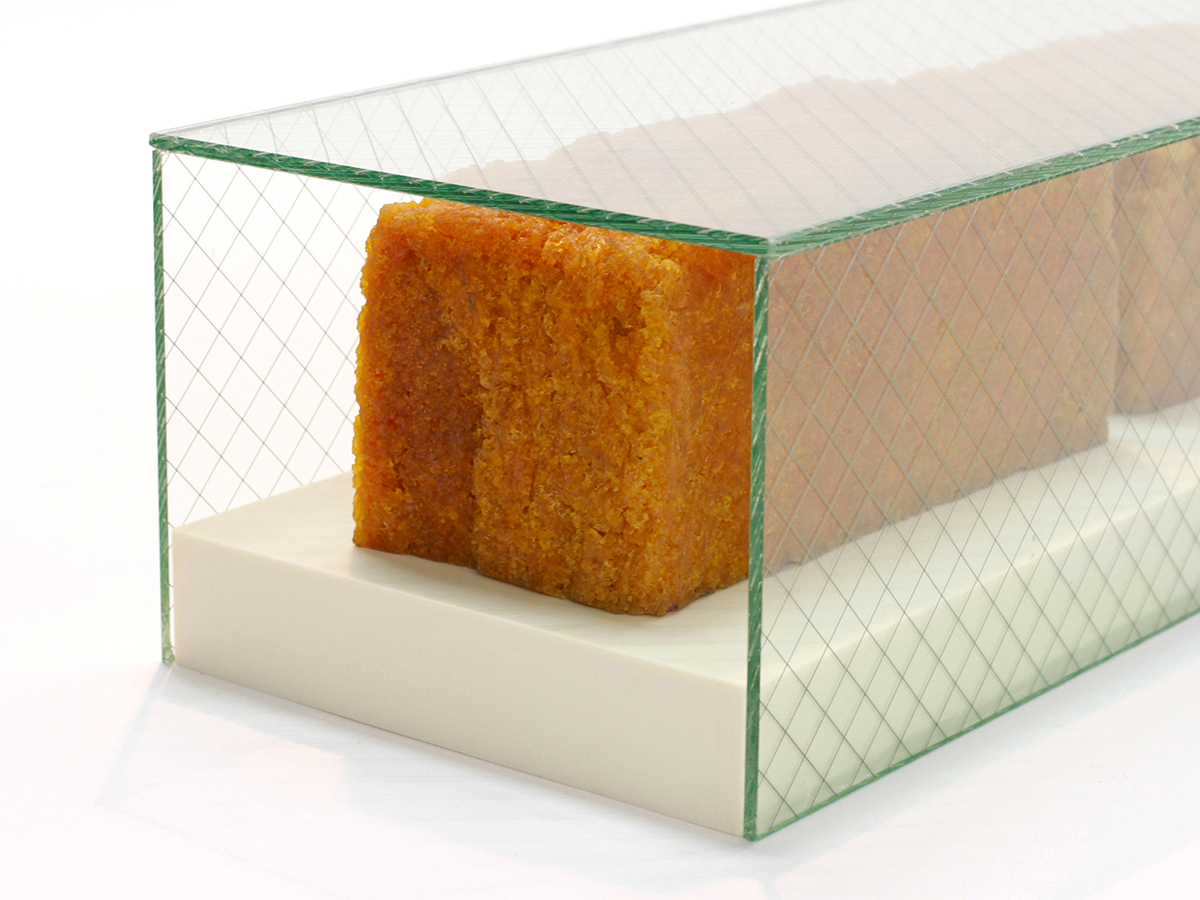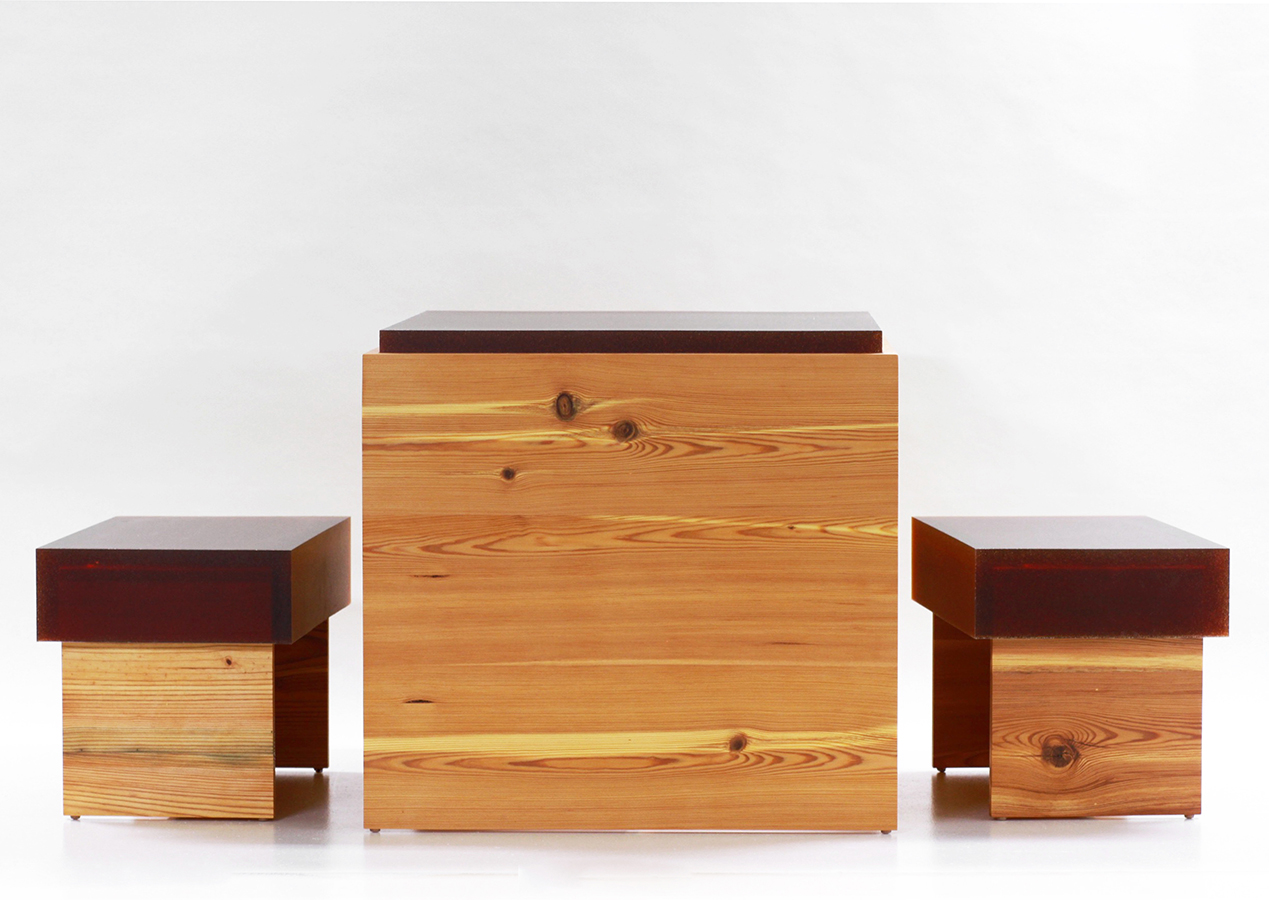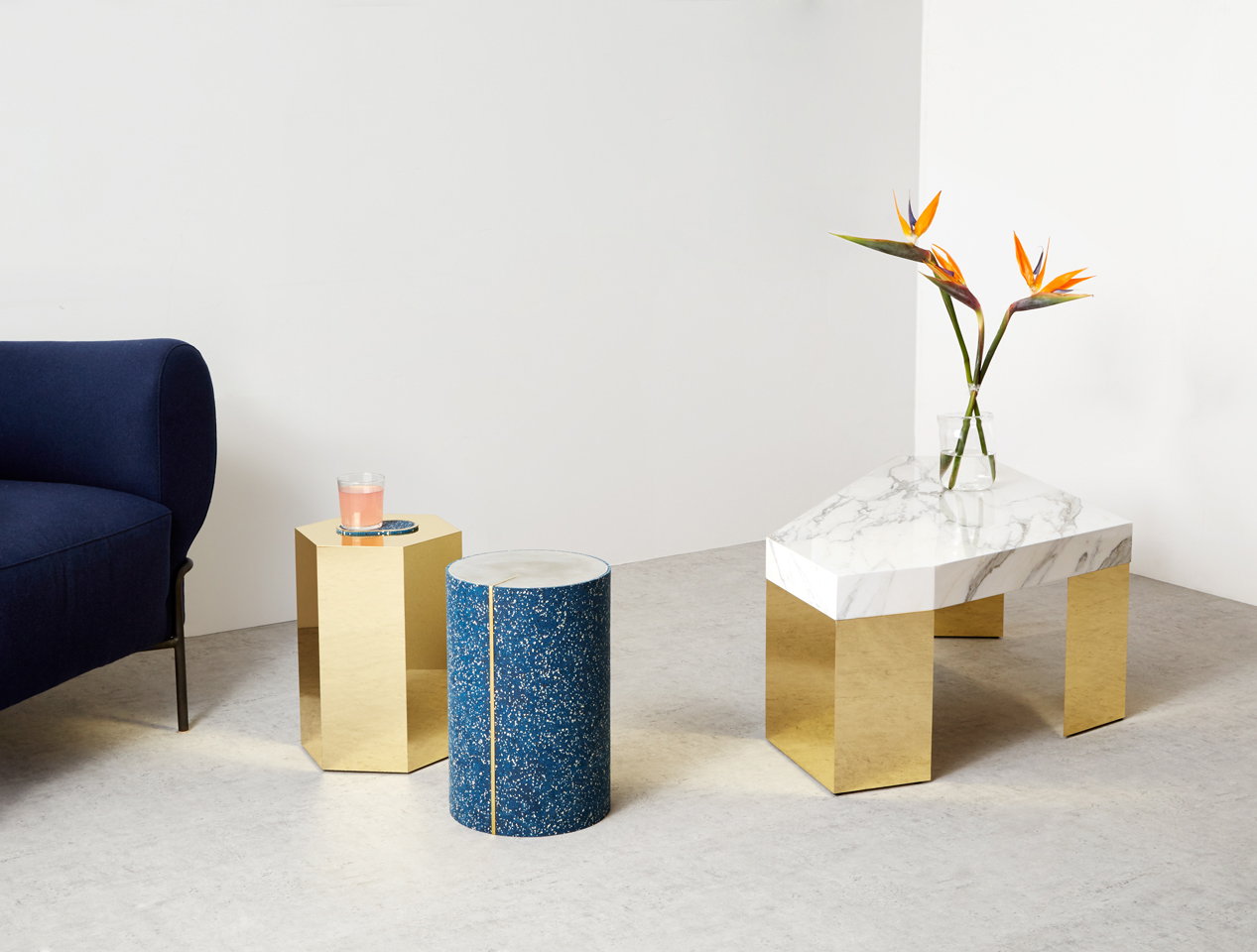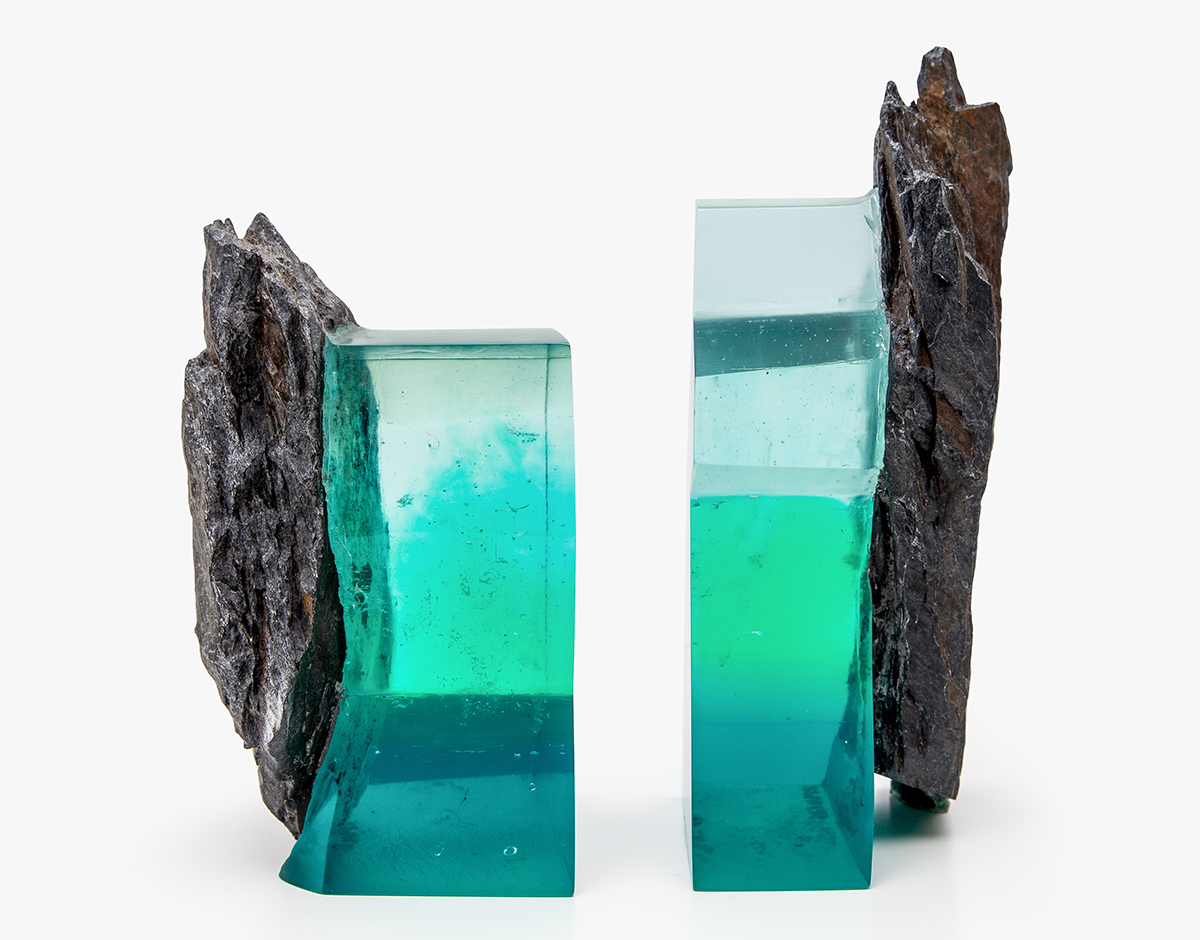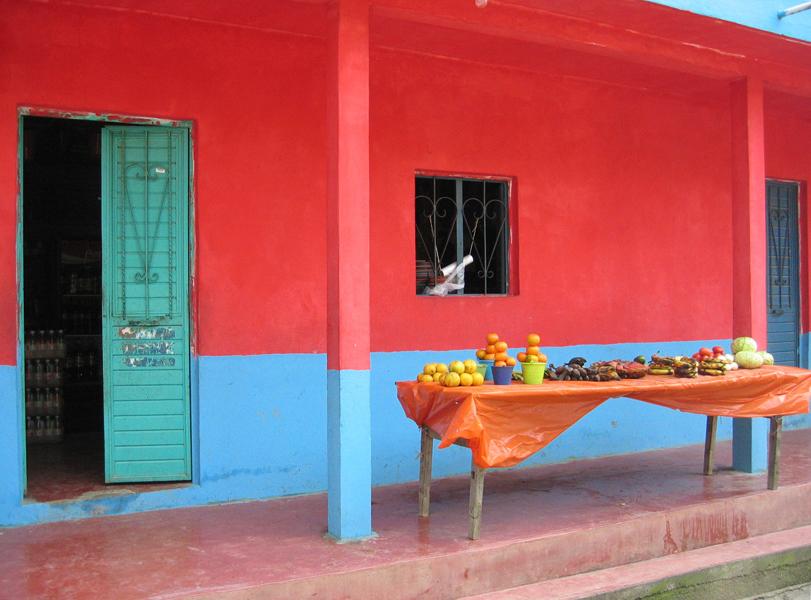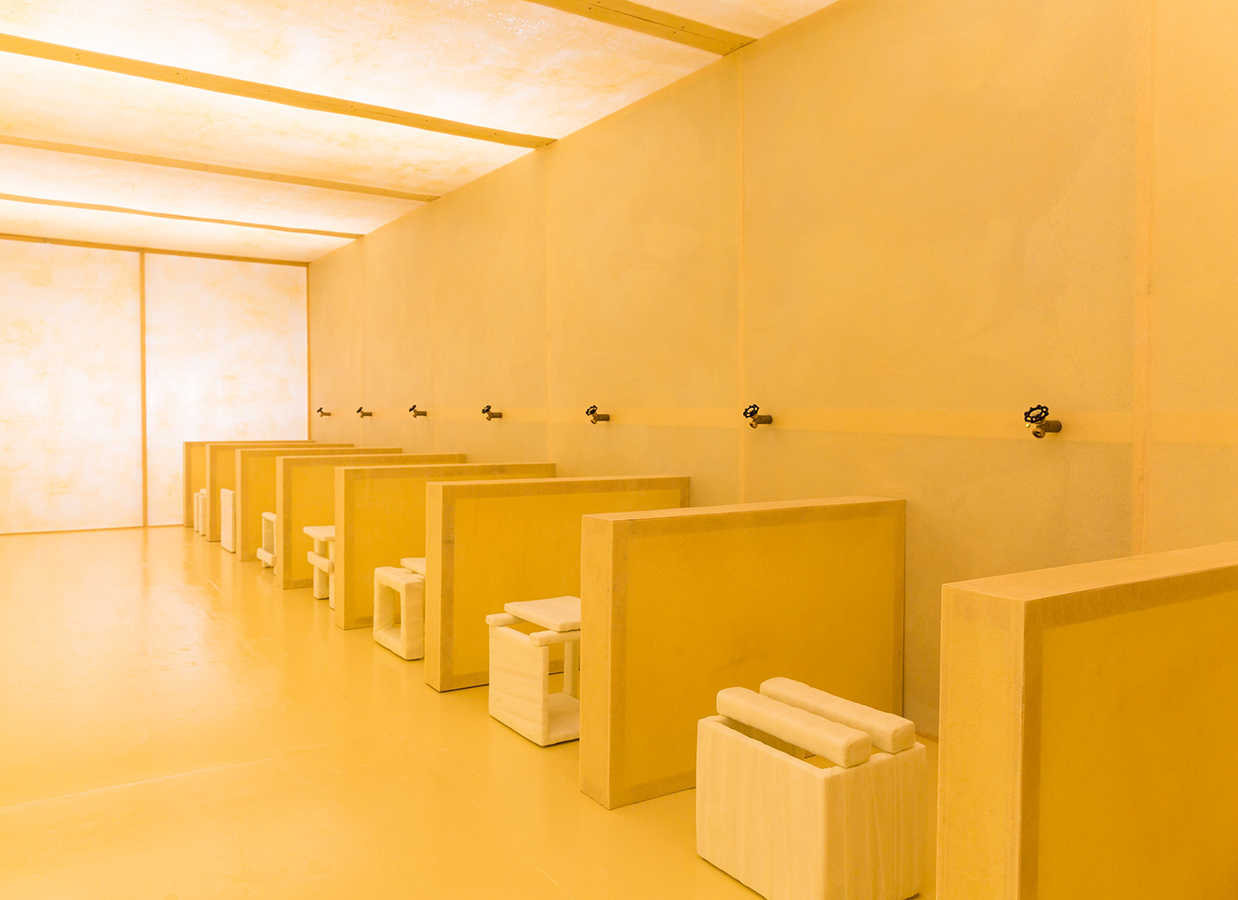
03.12.18
Q+A
Fiberglass, Corian, Rubber, and Resin: Welcome to the Materials-Obsessed World of Wentrcek/Zebulon
Brooklyn design duo — and recent American Design Hot List-ers — Kristen Wentrcek and Andrew Zebulon began making work together six years ago as Wintercheck Factory. And while their moniker has recently changed (the duo is currently going by Kristen Wentrcek / Andrew Zebulon), their work has always derived its impact from the tension between the what and the why — the “what” being a material language that enforces approachability, and the “why” embedded in how it all comes together to elevate the mundane, from wire glass to medical cast tape to natural rubber (which creates furniture that looks almost like a Twinkie).
“It seems way more important — and quite frankly less boring — to explore and exercise what design can be when you remove it from commercial constraints or the need to satisfy clients,” Wentrcek told us way back in 2016. Which makes their latest project — an “immersive entry pavilion” for Collective Design, which debuted this weekend — that much more compelling. The piece elaborates on themes established by their ongoing installation Intermediate States — only this time with a very specific audience in mind and for a very specific client. We caught up with the pair to find out how the collaboration came about.
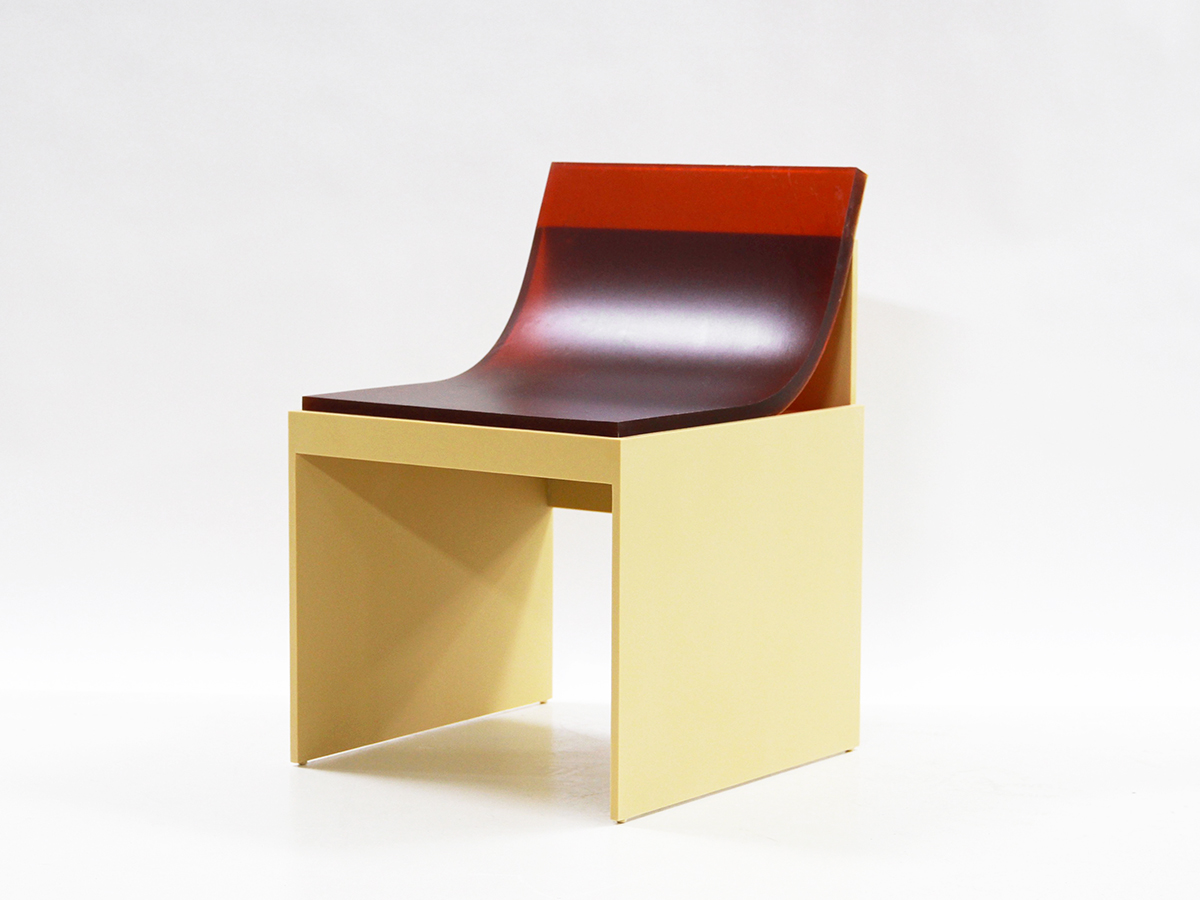
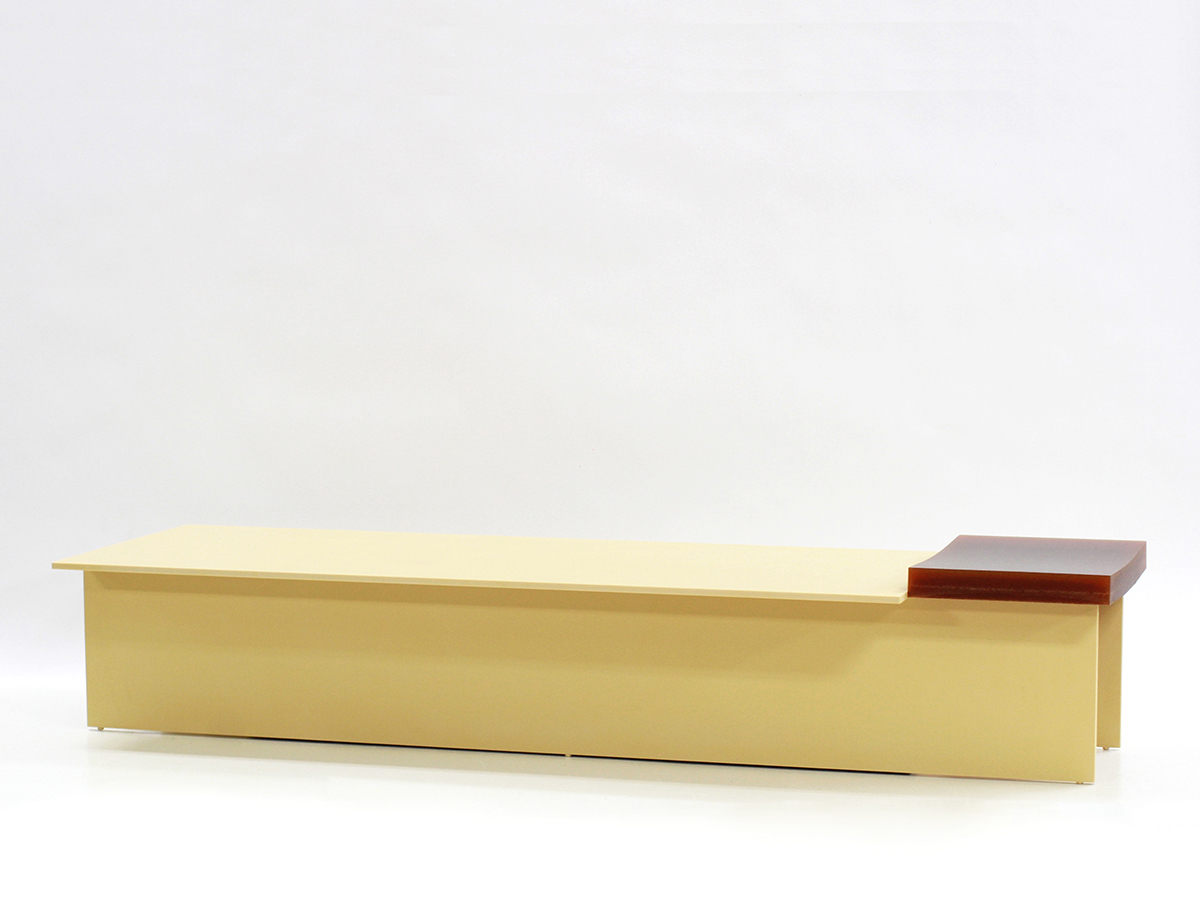
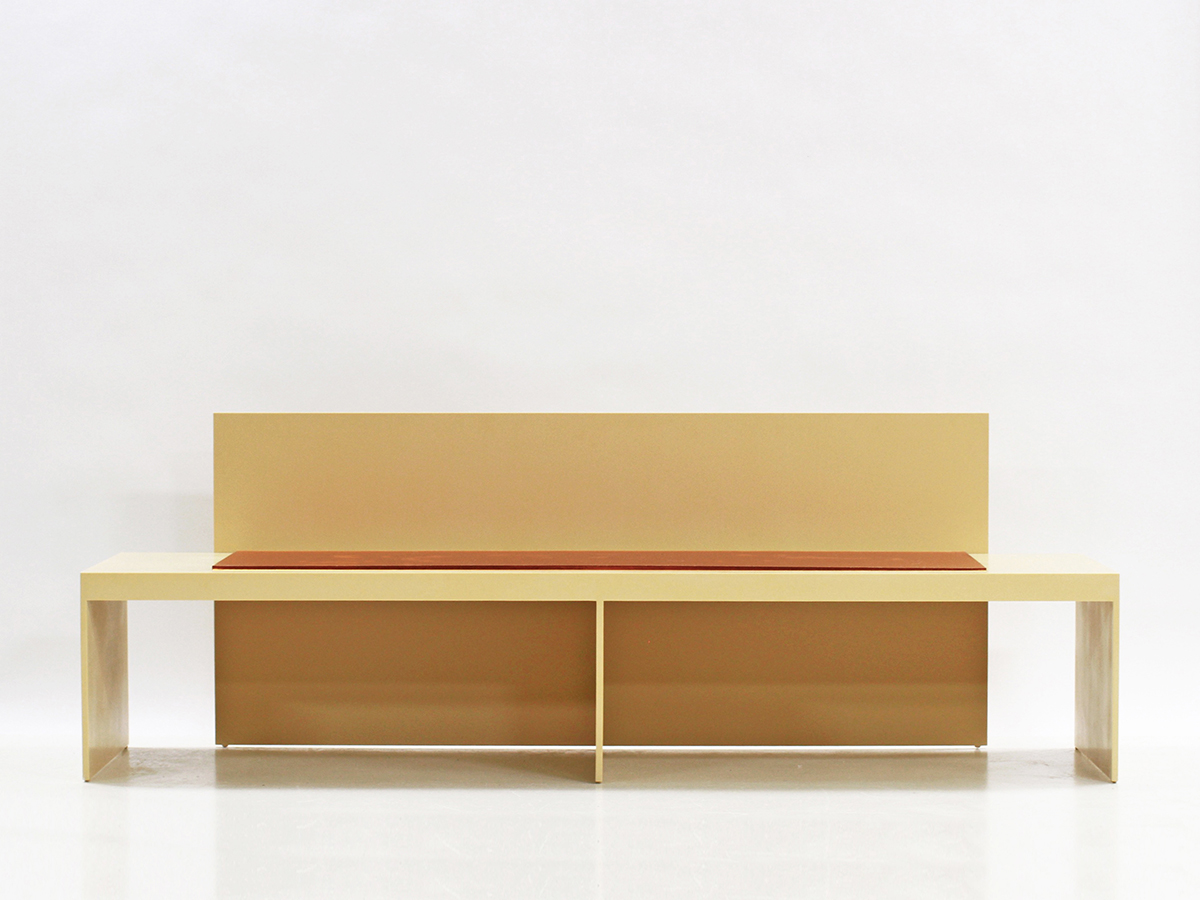
First things first: how did the two of you meet and decide to start working together?
Zebulon: We met through mutual friends. Kristen asked me to do some illustration work for packaging that was being sent to her distributor in Japan. It quickly became apparent that we had similar aesthetics and interests. We also just liked fucking around in the shop and building weird stuff; we decided to make and sell some one-off furniture pieces and things developed from there.
What are your respective professional backgrounds?
Kristen worked in real estate development before launching Wintercheck Factory in 2009. I studied art in school and did a bit of sculpture work, and grew up around job sites with my dad, who’s a carpenter.
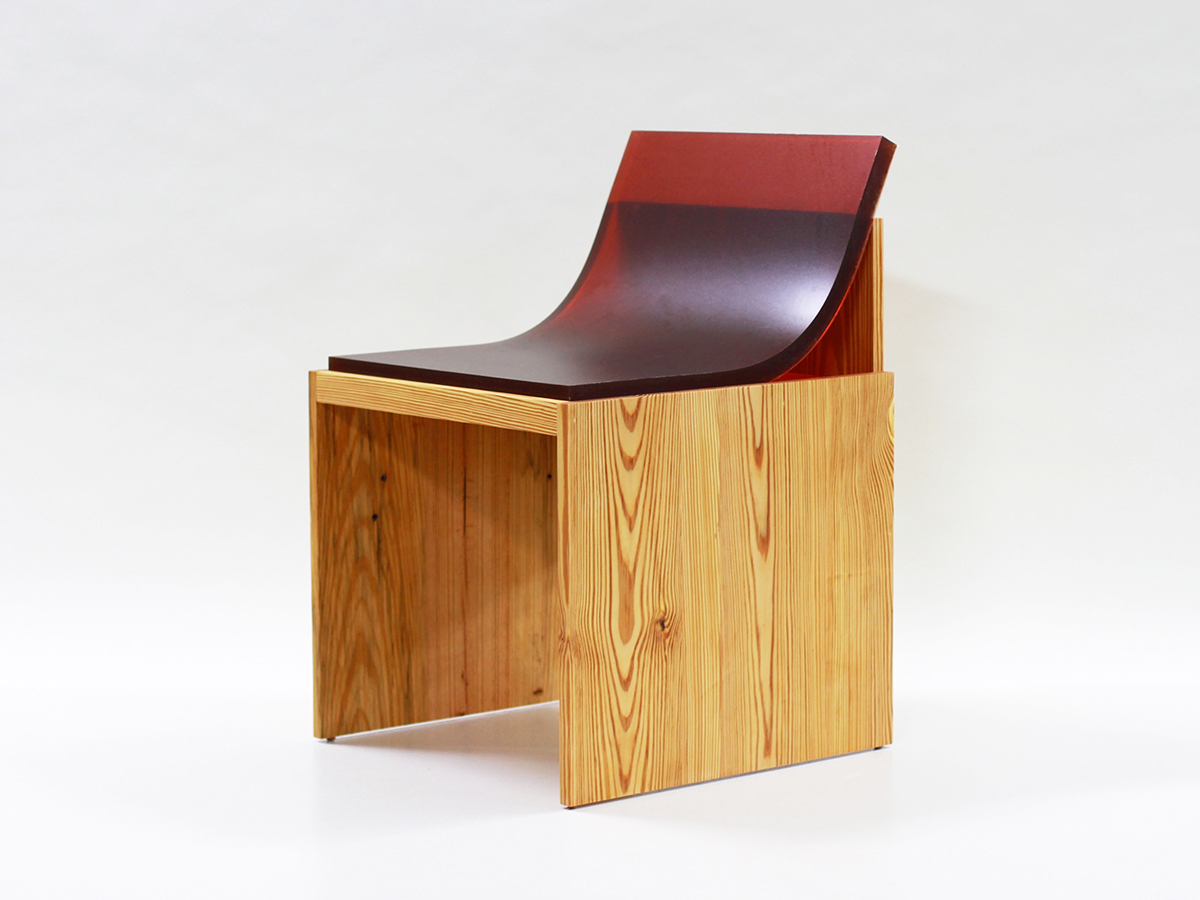
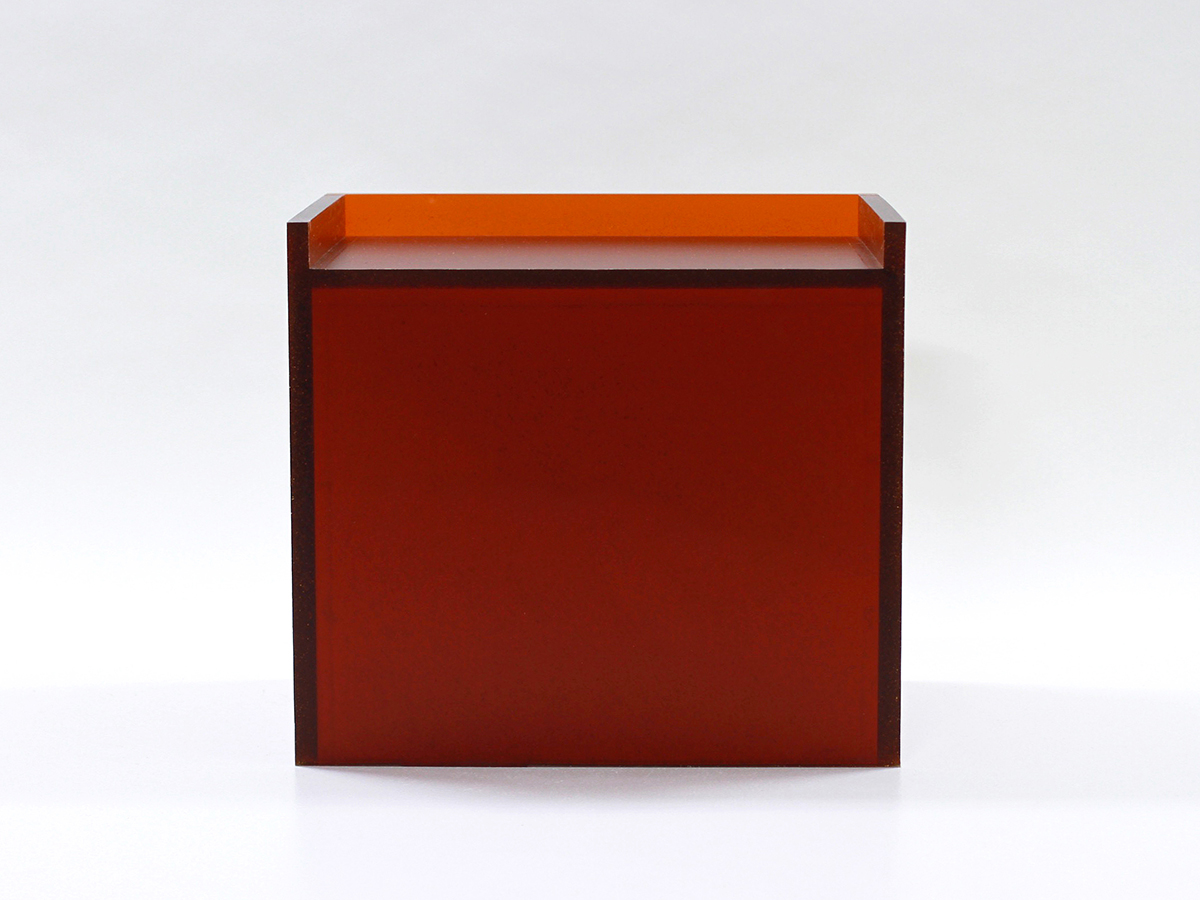
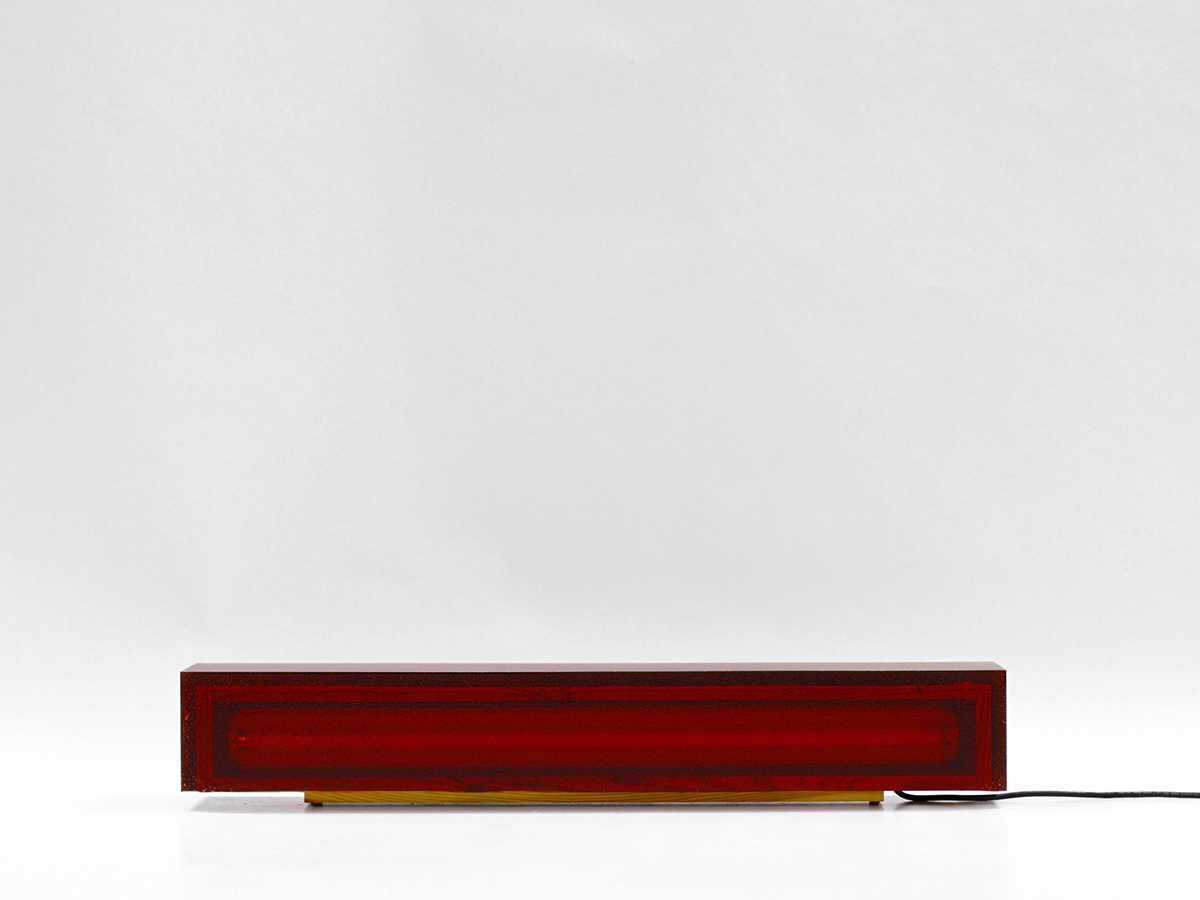
How did your practice get started?
Though we consider our newest work to be more sculptural than anything, the practice is definitely rooted in design. We originally began making minimal pieces of furniture in solid wood, but over the years have really expanded the practice by incorporating more challenging materials such as wire glass, natural and synthetic rubber, and fiberglass panels, and by slowly shedding the urge to be functional in any way. One thing that has stayed the same is our tendency to work with subtle colors, straight lines, and somewhat Brutalist forms. Our emphasis is on perception and material aesthetics rather than functionality.
How would you describe the material evolution of your work?
Materials have always been important to our work — it’s something that really flows from Kristen and the master database of materials that she keeps in her head, indexed by their texture, feel, and the memories they can prompt in the viewer. Once we stopped being concerned with functionality, we were free to really experiment. I think many aspects of our work spring from the tension that results from trying to force a material to do something that maybe it’s not really meant to do.
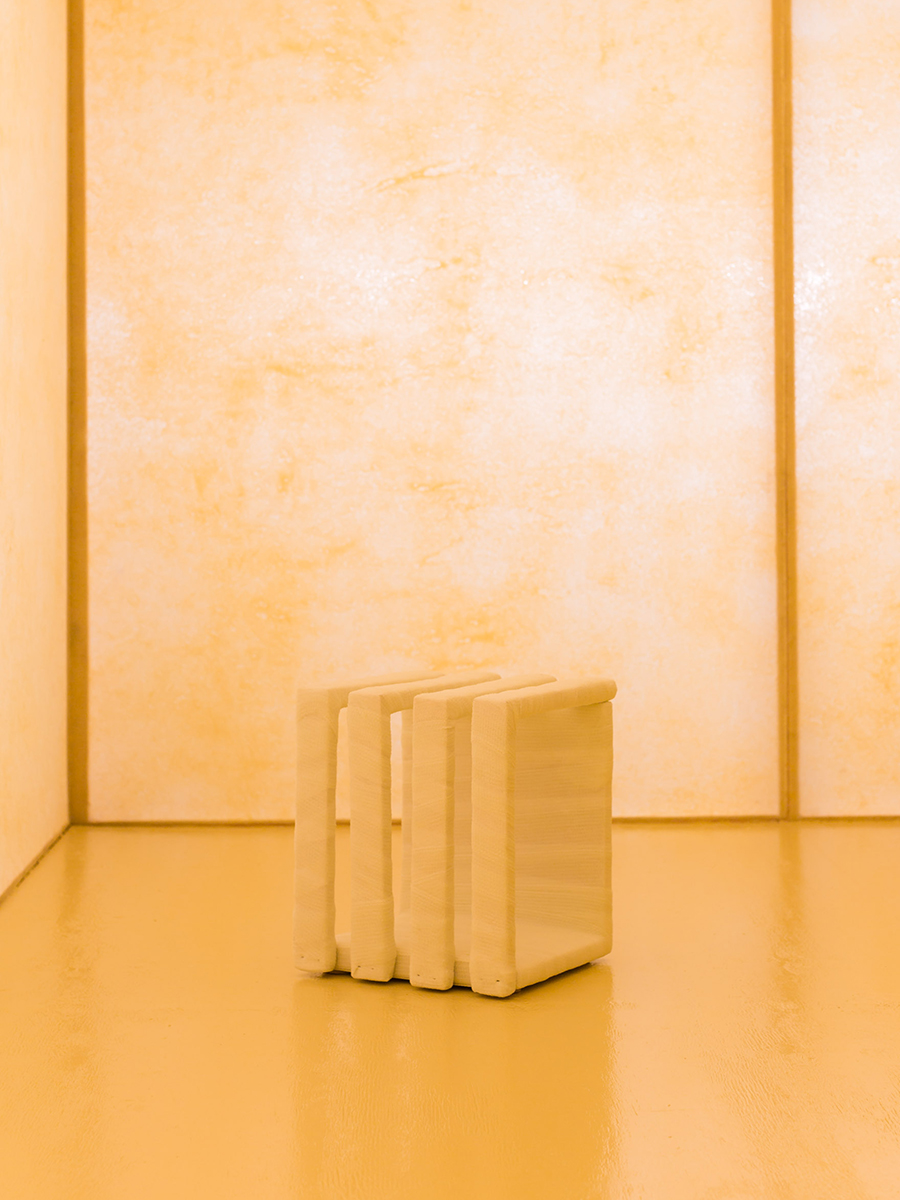
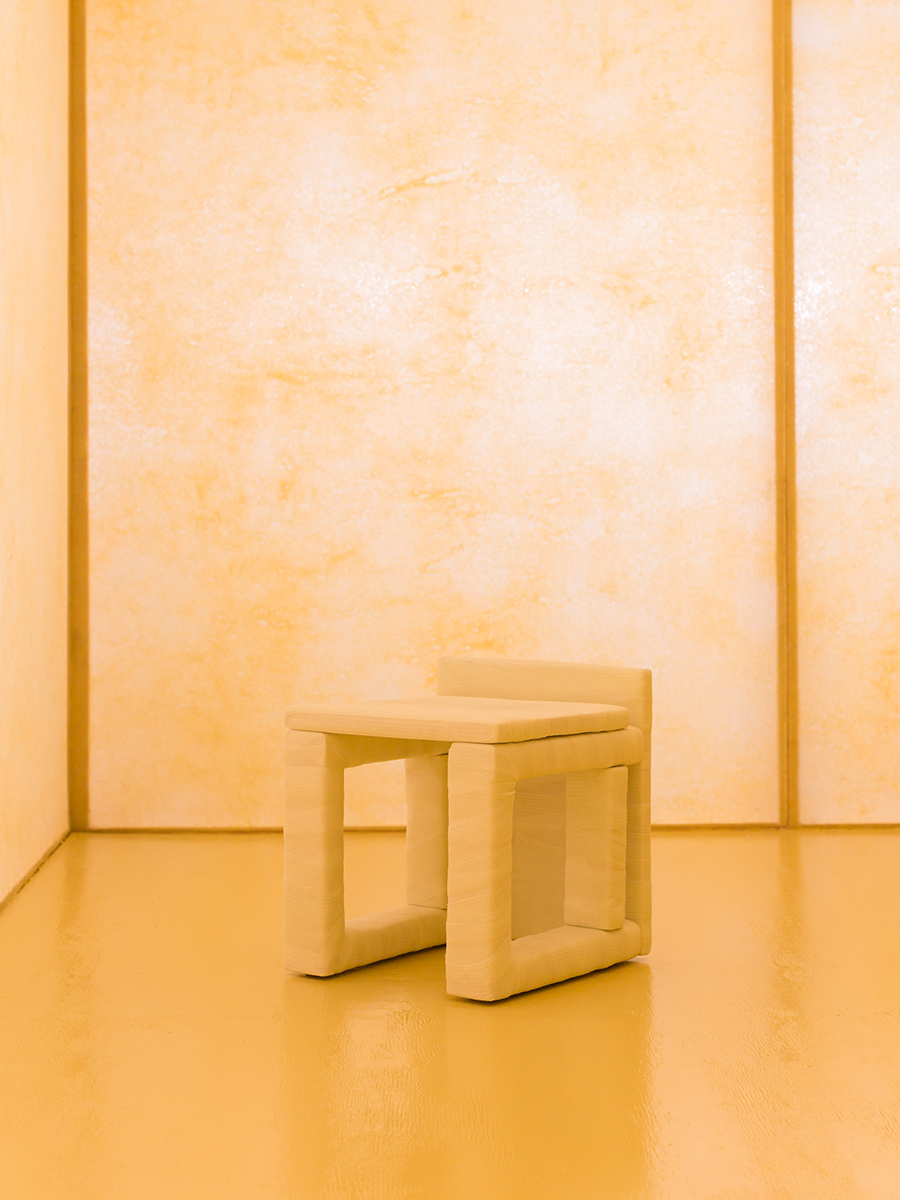
For Intermediate States, an ongoing, immersive installation in your studio, you created a room from panels of backlit, hand-poured fiberglass, the form of which looks almost like a chapel or a sauna, and invited a select number of guests in for a “seating.” Can you talk about how that project came about?
We had become kind of conditioned to think within certain parameters when making new work. Everything we were making and every show we participated in, we were making objects. Intermediate States is an exercise in pushing beyond that, to build a fully realized environment where we could control all the elements and enclose the viewer in a space completely of our own making so it becomes less about specific objects and more about the overall impact or effect. We were trying to concentrate the viewing experience, and really give people the chance to sit with our work and experience it. We also realized that we’re lucky to have so much space in our studio and decided we should just do the wildest things we can while we have it.
You’ve translated some of that feeling into your entrance for Collective. Is this your first time working with that fair?
Yes! We met Collective founder Steven Learner in our studio after a viewing of Intermediate States. I think all three of us really connected on a mutual interest of light, space, and proportion and how these components have the ability to create unique moments in time. We are so humbled to have been invited to create a follow-up installation in the entryway for this incredible show.
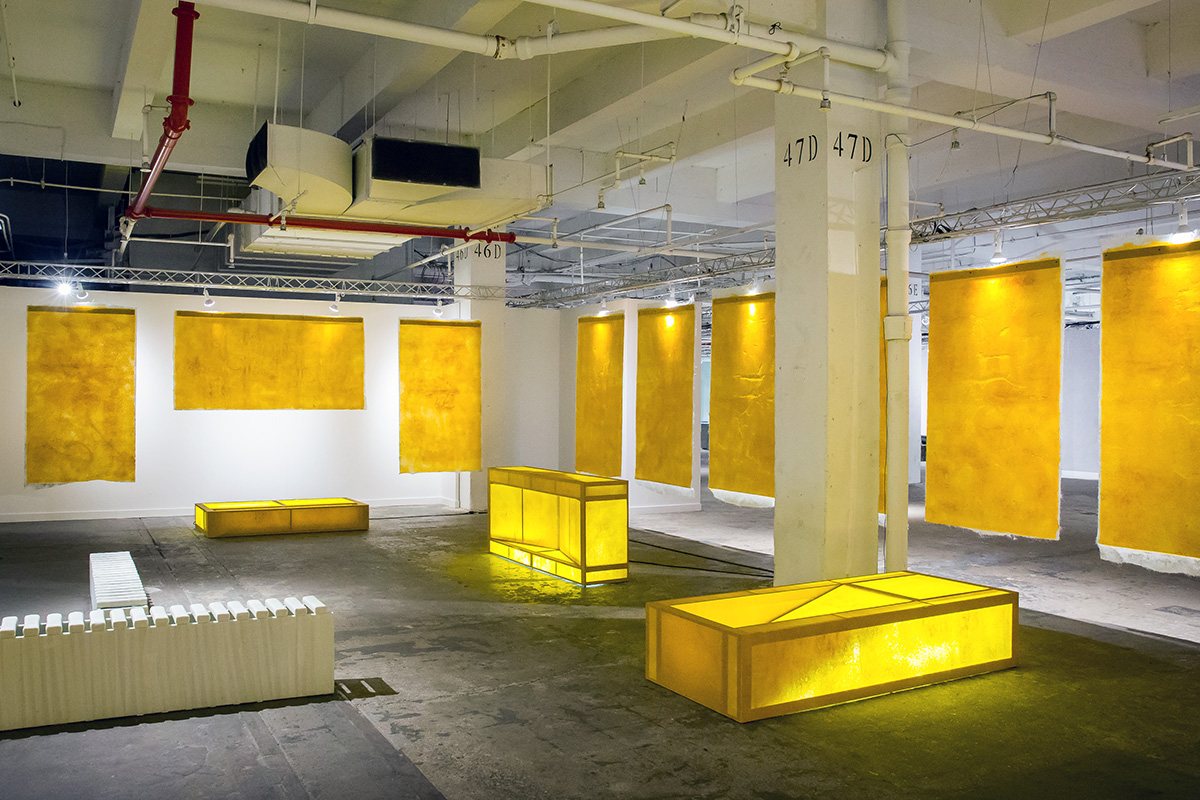
What did your installation (above) entail?
For Collective, we created Intermediate States II, a site-specific installation of fiberglass and light. Constructed from hand-laid fiberglass panels, the pieces on display were five unique masses scattered throughout the 1,000 square-foot entry. Each structure was embedded with a fluorescent fixture, which provided varied illumination of the fiberglass and framing structure. We also hung sheets of fiberglass around the perimeter of the entry, containing the space with something like a ‘deconstructed’ version of the sculptures. At the center of the room was seating that had been wrapped in a resin-impregnated medical cast tape.
Do you feel there’s a through-line in the production and execution of the works?
There is a through-line in the materials and in the visual language, but it is definitely a different work. So much of Intermediate States is predicated upon the intimacy and length of each seating; with this second iteration, we had to think about how we could convey or induce some of that intimate, focused feeling in a very public space.
Did the temporality of the installation for Collective affect your creative process?
Temporality didn’t really have much of an effect (beyond the fact that it limited our ability to, say, build a fiberglass house inside of the entry). I think it was more about the logistics of the space, like how many people arrive, where they are going and what the space is intended for. We needed to keep in mind that it was a high traffic space and a threshold for the show inside.
It was really kismet that Steven came to a session of Intermediate States. In our subsequent conversations, it really seemed like he got what we were trying to accomplish with the installation, and it resonated with his idea of an entry for Collective that would define a separate space that sets the tone for people arriving at the fair. So in that sense, the entry gives us an opportunity to continue exploring the concepts present in the first Intermediate States. We’re presenting our work to an audience that gets to experience it without us as an intermediary.
